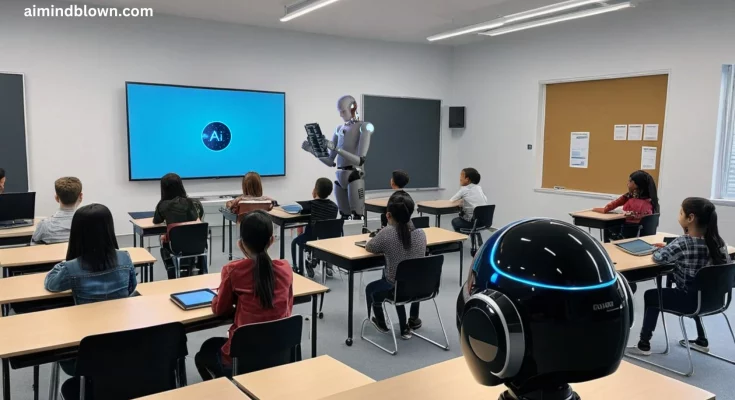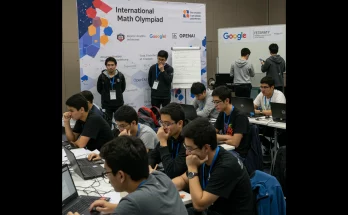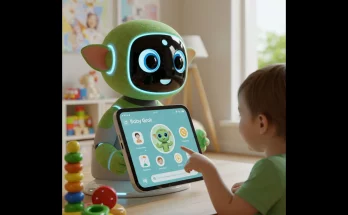In recent years, the rapid growth of artificial intelligence (A.I.) has been one of the most talked-about topics across various sectors, including education. As A.I. technologies continue to evolve, they bring both opportunities and challenges, fundamentally transforming the education landscape. Understanding the implications of this technological shift is crucial for educators, students, and policymakers alike.
The Rise of A.I. in Education
As A.I. integration becomes more prevalent in educational systems, institutions are beginning to recognize the necessity for their students to adapt to this changing environment. A new job posting tool developed by the University of Maryland’s Robert H. Smith School of Business, known as UMD-linkup A.I. maps, is revolutionizing the way we track A.I. job postings across the country. This tool indicates a concerning trend: the burgeoning need for A.I. skills across educational services.
National Rankings and the Need for A.I. Skills
- As per the latest data, Minnesota ranks 17th in the nation for new A.I. job postings in the education sector.
- This is a significant jump from its previous ranking of 28th in December 2024.
Such statistics indicate the growing demand for A.I. competency and underline the importance of educating future leaders in the educational workforce.
Preparing Students for the A.I. Workforce
Steve Baule, the chair of Winona State’s leadership education department, stresses the importance of preparing aspiring educators for the challenges posed by A.I. He emphasizes the necessity for educators to be informed about how to effectively utilize A.I. tools responsibly. According to him, students must delve into the ethical considerations surrounding A.I. and engage in data curation effectively.
The Future Job Market: Skills Required
Baule is optimistic about the future, noting that while A.I. will not obviate the need for skilled professionals, it will significantly transform job roles. In his words:
“You’re going to see a lot of need for upskilling. People are going to need to have a more effective understanding of how to use technology.”
As A.I. continues to penetrate different functions within education, it will create a demand for new roles that emphasize A.I. skills and data literacy.
A.I. in the Classroom: Facilitating Learning
Interestingly, Baule’s approach towards A.I. in the classroom promotes its use as an educational tool. He permits his students to use A.I. but requires them to inform him about how they are utilizing it, including the specific tools being applied. This reflective approach encourages students to understand the technology they are interacting with, fostering their analytical skills.
Key Benefits of A.I. in Education
- Personalized Learning: A.I. can tailor educational experiences to meet individual learning styles and paces.
- Efficiency: It automates administrative tasks, allowing educators to focus more on teaching and less on paperwork.
- Data Analysis: A.I. enhances the ability to glean insights from large data sets to improve educational outcomes.
- Collaboration: It fosters human-A.I. collaboration, which can enhance creativity and problem-solving in the classroom.
Challenges Ahead
Although A.I. offers numerous advantages, the transformation also brings challenges that need to be addressed. Some potential obstacles include:
- Equity: Ensuring all students have equal access to A.I. technologies and related resources.
- Job Displacement: Concerns that certain educational roles may become redundant due to automation.
- Ethical Concerns: Navigating the ethical ramifications associated with the use of A.I. in education, including issues related to data privacy and bias.
The Path Forward
As we look ahead, it becomes increasingly vital for educators and institutions to adapt their curricula and teaching methodologies. Here are some steps that can lead us in the right direction:
- Professional Development: Educators should receive training on emerging A.I. tools and how to integrate them into their teaching.
- Interdisciplinary Approaches: Incorporating A.I. across various subjects can help students gain a comprehensive understanding of its applications.
- Stakeholder Engagement: Collaborating with technology leaders and policymakers to provide a well-rounded educational experience.
Conclusion
The integration of A.I. into the educational sphere is no longer a distant possibility but a present reality. As we embrace these changes, it’s essential to equip both educators and students with the necessary skills to thrive in an increasingly A.I.-driven world. By fostering an environment of innovation, ethical considerations, and adaptability, we can ensure that the next generation is ready to face the challenges and opportunities that A.I. presents. We must not only cultivate an understanding of technology but also instill an awareness of its implications on society, ethics, and education.



